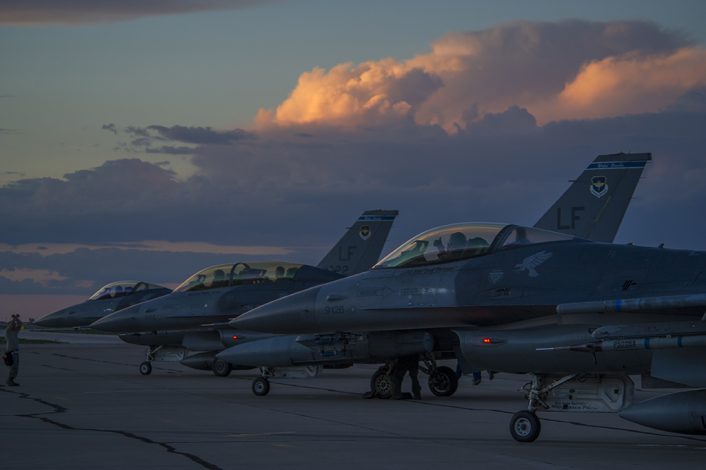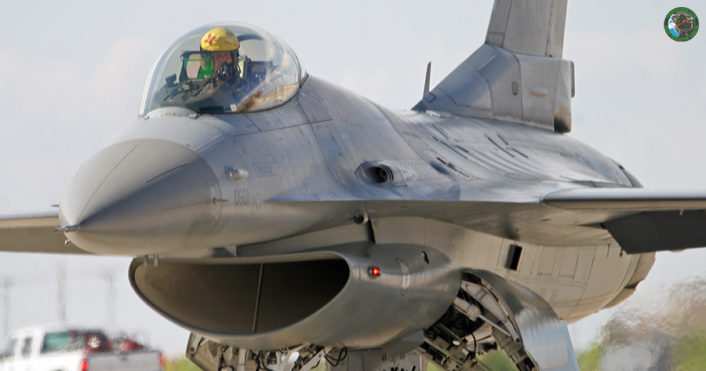Student pilot during first nighttime live fire exercise at White Sands Missile Range, New Mexico, strafed the wrong target.
According to court records, on Jan. 31, 2017, Charles (Chuck) Holbrook, a retired master sergeant and a business development manager at Sensors Unlimited, a division of United Technologies Aerospace Division, was killed by an F-16 student pilot who mistook a line of rental cars for the similarly aligned target during nighttime training, shooting 155 rounds of Vulcan ammunition toward a group of people on ground. The strafe blew up one of the rental cars and hit Holbrook in the head with a 20mm round. The contractor died some hours later at the hospital.
The family sued for 25 Million USD in damages and a district judge has ruled that the U.S. Air Force was responsible for the death. A settlement was awarded although the exact amount is unknown and confidential.
“The Defendant United States of America through the U.S. Air Force was responsible for the acts and omissions of their employees, agents, apparent agents and contractors, including Defendant John Does I and II, the JTAC personnel and those U.S. Air Force members responsible for training, supervising, directing and ensuring safety in the live fire nighttime run,” court records state.
According to the latter, Holbrook was invited at White Sands Missile Range by the U.S. Air Force to demonstrate a laser imaging device to members of the Dutch Air Force during nighttime live fire exercise with a “close air support scenario where F-16 fighter jets would attack with live ammunition an enemy position when “friendlies” were nearby. There were four jets in the air – 2 instructors and 2 student pilots, each in their own F-16 – and 10 individuals on the ground, some who were training to direct air-support fire. ”
This was the first time the young pilots performed a nighttime live fire exercise using NVGs (Night Vision Goggles).
“The four pilots were grouped into pairs, called “flights,” Biggie flight and Bolt flight. Each flight had an instructor in one aircraft and a student in the other. The student pilot who killed Mr. Holbrook had the call sign “Biggy 42” or “Biggy 2″. At the direction of his flight instructor [MIP – Mishap IP], this was the MP[Mishap Pilot]’s first night close air support mission, first use of night vision goggles while piloting the aircraft, and the first time he would be performing a nighttime high-angle strafe of unlit targets.”
“At the direction of his flight instructor, this was the MP’s first night close air support mission, first use of night vision goggles while piloting the aircraft, and the first time he would be performing a nighttime high-angle strafe of unlit targets. […] The remaining persons on the ground were two Army Ground Liaison Officers; three JTACS from the Dutch Air Force to observe Mr. Holbrook’s laser imaging device; and Civilian contractor Charles Holbrook.”
Therefore, the exercise included four F-16s, two flown by instructors and two flown by students, with 10 people on the ground.
The intended training target was a line of vehicles on a dirt circle, with a road going north of the circle.
“The observers and civilian Charles Holbrook were placed less than a half mile away from the target in an almost identical configuration as the target – a line of rental vehicles on a dirt circle with a road going north of the circle. At night, in the dark, these two targets would look the same.”
About 38 minutes after the exercise had started, an instructor JTAC set up a red strobing infrared (IR) beacon at the observation post (OP) that would distinguish the observation point from the surrounding area and from any targets because it would display a visual flash in the pilots’ night vision goggles.

While the Instructor pilot on the F-16 confirmed that he had seen the strobe, the student pilot never indicated that he had located the strobe and thus the real people on the ground. “This should have set off alarm bells for the MIP and he should have asked why the MP did not announce that he saw the strobing OP or otherwise verified that the MP saw and understood that the IR strobe indicated the observation post.”
Around this same time, the second pair of F-16s, “Bolt” flight, arrived at the bombing range and the MIP and JTACs needed to coordinate a busier airspace. This created a lot of confusion and led to a first mis-targeting of the people on the ground at the Observation Post:
“At 7:07 pm, the MP called out “capture target,” ostensibly indicating that he was tracking the intended target 900 meters southeast of the OP, but the MP never described what he was targeting, and the MIP never asked him to describe or verify that the MP was tracking the correct target, rather than the OP. The MIP could have activated a link between his jet and the MP’s targeting pod, so the MIP could see what the MP was targeting, but the MIP chose not to do so. Evidencing the confusion going on in the air, before the MP could perform his strafe on what everyone thought would be SA-8—but would have actually been the OP—the MIP ordered the MP to abort his strafing run so the MIP could instead direct Bolt flight’s terminal attack on the same target, SA-8.”
At 07:10 pm there was what the court document call a “First Red Flag Warning – Strafe 1”.
“At this point, the MP’s targeting pod was working correctly to track the correct target and his steering information was showing him how to steer onto the correct target, SA-8. MP called out the flight heading that would have placed him on target (35 degrees clockwise from magnetic north) but he actually flew a different heading that pointed him back to his original incorrect target – the OP (19 degrees from magnetic north).
He had to ignore his targeting pod and steering information to perform this maneuver. This shows the student MP was not able to either follow or understand his flight data and instrumentation.
After pointing his aircraft at the people on the ground at the OP, he squeezed the trigger to fire his 20mm Vulcan cannon on the OP. No rounds were released during this mis-targeting, because the MP had inadvertently left his master armament switch in simulation mode, so nothing happened, and he flew over the top of the OP.
Despite the fact that his instruments showed he was on the incorrect target, a target that was not lased or sparkled, but had a red warning strobe light, after his failed attempt to hit the wrong target, neither the MP or his instructor realized his mistake.”
At 07:13 pm, the student pilot pulled for another pass on the same simulated SA-8 target.

(Image: Tom Demerly/TheAviationist.com)
“This time, as the MP approached the correct target, he aborted and did not squeeze the trigger. The MIP asked him why he aborted. The MP said, “The sparkle just looked different so I did not want to shoot, I wasn’t uhh, it wasn’t as circular as I thought I saw, it looked like a light maybe on top of a building, I was wrong.” The MP was describing the red strobe light above the small structure at the Observation Post, where the people on the ground were located. 88. His description is spot on for the OP, which had a light on top of a building and is slightly more oblong than SA-8 (the real target). The real target at SA-8 had no lights. Even the possibility that the MP could have been describing the OP at any point during this exercise should have been enough warning for the MIP or the JTACs on the ground. The MIP or the JTAC should have slowed or shut down the training session until he could be sure the MP clearly understood the proper target.”
The fatal strafe occurred at 07:18 pm.
“The MIP again pointed his targeting pod laser at the SA-8 target and the MP’s targeting pod accurately tracked the correct target using the MIP’s laser. As a result, in the MP’s heads-up display, a marker was placed over the correct target (this was in addition to the steering point diamond also indicating the correct target).”
Again, the pilot called out that he was tracking the SA-8 but provided no description of what he was seen, not did the MIP ask him to verify what he was seeing.
Despite the plane’s sensors were tracking the correct target, the MP maneuvered the aircraft to the left, away from the SA-8 and back toward the Observation Post he had been mistakenly targeting on his two previous runs.
“When the MP turned on the air-to-ground strafe mode and a strafing reticle appeared in his heads-up display, there was no target information to aim at in the heads-up display, because the target was off to the right. The MP either did not recognize or misinterpreted the significant information in his heads-up display, i.e., that the steer point diamond and laser targeting reticle were absent from his display.
After receiving the okay from the MIP, the MP squeezed the trigger while the nose of the aircraft was pointed at the OP and sent 155 rounds of Vulcan cannon ammunition toward the ground crew, blowing up a rental car and striking Chuck Holbrook in the head with a 20mm round.”
A very sad incident that reminds us that firing ranges are dangerous and also how difficult a CAS mission with (simulated) TIC (Troops In Contact) at night can be, especially for a pilot with little or no experience, even when it is performed in a friendly setting without real enemies shooting at you.









